 Whooo went the wind and out went the lights and the season of scare and dare is just around the corner, so beware, of all these fun, spooky, and ghoulish books to share.
Whooo went the wind and out went the lights and the season of scare and dare is just around the corner, so beware, of all these fun, spooky, and ghoulish books to share.
For those who celebrate Halloween there are plenty of books with monsters, skeletons, witches, mummies, ghosts, devils, and even Bogles that eat children (to learn more about Bogles, you’ll need to read the book review). For those who don’t celebrate Halloween, there are books that don’t mention the holiday, but are scary. For the young reader, there is a scary book about a “Snatchabook” who steals books—“oh no!”—and a not so scary book about romping monsters. For the older reader, there is a scary book about a teenage boy who keeps seeing his dead brother, and there is another book that is mystery and packed-filled with romance and gore.
For those who want to incorporate the Common Core State Standards, there are books about the scientific method, historical fiction, and folklore. And for those who believe in common sense, there is even a book about safety. For more information about safety you can check out the Centers for Disease and Control Prevention website.
Whether you are trick-or-treating or just reading, enjoy the spooks and the books this Halloween season!
GRADES K – 2
Biedrzycki, David. (2013). Me and my dragon: Scared of Halloween. Watertown, MA: Charlesbridge.
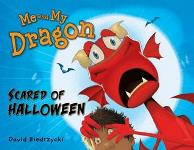 What more can you ask for than book that has a dragon and Halloween? This story is about a boy who loves Halloween. Unfortunately, his pet dragon does not like trick-or-treating. How can it be that Dragon is afraid of Halloween creatures, such as zombies and mummies? Not to be deterred by Dragon’s angst, the boy explains that the creatures aren’t real, but to no avail. Next, they try to find a costume, such as a robot, but all of the costumes end in disaster. To comfort Dragon, the boy reads Dragon’s favorite book to comfort him, which prompts an idea for the perfect costume. This engaging story is enhanced by colorful and detailed illustrations that will captivate readers of all ages.
What more can you ask for than book that has a dragon and Halloween? This story is about a boy who loves Halloween. Unfortunately, his pet dragon does not like trick-or-treating. How can it be that Dragon is afraid of Halloween creatures, such as zombies and mummies? Not to be deterred by Dragon’s angst, the boy explains that the creatures aren’t real, but to no avail. Next, they try to find a costume, such as a robot, but all of the costumes end in disaster. To comfort Dragon, the boy reads Dragon’s favorite book to comfort him, which prompts an idea for the perfect costume. This engaging story is enhanced by colorful and detailed illustrations that will captivate readers of all ages.
– Jane Kelley, Washington State University Pullman
Docherty, Helen. (2013). The Snatchabook. Illus. by Thomas Docherty. Naperville, IL: Sourcebooks, Inc.
 There is nothing scarier for a child, an adult, and especially a bibliophile than not having a book to read at bedtime, but that is exactly what happens in the little animal village of Burrow Down. On a dark and windy night, while the forest animals are reading their bedtime stories, the storybooks disappear, and Eliza Brown decides to solve the mystery. One night she leaves a stack of books in her bedroom to lure the thief. Despite being scared, she waits and waits. Finally, a mysterious creature called a “Snatchabook” tries to snatch-a-book. While Eliza reprimands him, he explains that he has no one to read to him. Understanding his plight, Eliza helps him make amends, by returning the books and apologizing for his actions. Now the Snatchabook doesn’t need to steal books anymore; each night when stories are being read, the Snatchabook is always nearby.
There is nothing scarier for a child, an adult, and especially a bibliophile than not having a book to read at bedtime, but that is exactly what happens in the little animal village of Burrow Down. On a dark and windy night, while the forest animals are reading their bedtime stories, the storybooks disappear, and Eliza Brown decides to solve the mystery. One night she leaves a stack of books in her bedroom to lure the thief. Despite being scared, she waits and waits. Finally, a mysterious creature called a “Snatchabook” tries to snatch-a-book. While Eliza reprimands him, he explains that he has no one to read to him. Understanding his plight, Eliza helps him make amends, by returning the books and apologizing for his actions. Now the Snatchabook doesn’t need to steal books anymore; each night when stories are being read, the Snatchabook is always nearby.
– Jane Kelley, Washington State University Pullman
Noble, Trinka Hakes. (2013). The legend of the Jersey Devil. Illus. by Gerald Kelley. Ann Arbor, MI: Sleeping Bear Press.
 A dark, mysterious pine grove, with black swamps and murky bogs, close to the briny ocean in New Jersey has kept an ancient secret—the Jersey Devil! During a thunderstorm in 1735, Mother Leeds goes into labor to birth her thirteenth child. In pain, the frustrated mother screams for the devil to help her and an enormous creature emerges from her and flies up the chimney. Strange events– crops failed, chickens stopped laying eggs, horses got spooked – were all blamed on the devil. A traveling preacher, promising to get rid of the devil, held a prayer meeting. As his hat filled with coins, he felt hot breath on the back of his neck. Yikes! The devil was on his tail! People have avoided the forest since. The storyline and the pictures compliment each other perfectly. This book can be used in several content areas.
A dark, mysterious pine grove, with black swamps and murky bogs, close to the briny ocean in New Jersey has kept an ancient secret—the Jersey Devil! During a thunderstorm in 1735, Mother Leeds goes into labor to birth her thirteenth child. In pain, the frustrated mother screams for the devil to help her and an enormous creature emerges from her and flies up the chimney. Strange events– crops failed, chickens stopped laying eggs, horses got spooked – were all blamed on the devil. A traveling preacher, promising to get rid of the devil, held a prayer meeting. As his hat filled with coins, he felt hot breath on the back of his neck. Yikes! The devil was on his tail! People have avoided the forest since. The storyline and the pictures compliment each other perfectly. This book can be used in several content areas.
– Rani Iyer, Washington State University Pullman
Paquette, Ammi-Joan. (2013). Ghost in the house. Somerville, MA: Candlewick Press.
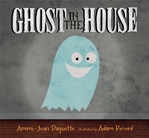 A not so scary story about a ghost, a mummy, a monster, a skeleton, and a witch written in a lyrical rhyme, is fun to read aloud as the words feel magical on the tongue. The story begins with a timid ghost in a creepy haunted house who “goes slip-slide with a swoop and a glide….” Next, the two creatures meet a mummy and a monster “… on the dark, spooky night, midnight black.” The creatures gather one by one until the innocent little boy who lives in the house unintentionally spooks the creatures. This book will become a favorite read aloud all year long.
A not so scary story about a ghost, a mummy, a monster, a skeleton, and a witch written in a lyrical rhyme, is fun to read aloud as the words feel magical on the tongue. The story begins with a timid ghost in a creepy haunted house who “goes slip-slide with a swoop and a glide….” Next, the two creatures meet a mummy and a monster “… on the dark, spooky night, midnight black.” The creatures gather one by one until the innocent little boy who lives in the house unintentionally spooks the creatures. This book will become a favorite read aloud all year long.
- Jane Kelley, Washington State University Pullman
Peterson, Megan Cooley. (2014). Trick-or-treat safety. North Mankato, MN: Capstone Press.
 Trick-or-treating door-to-door is a highlight on Halloween, but with this fun activity comes many dangers. Using simple text and informative photographs, this book teaches children how to be safe while walking around the neighborhood. Easy to follow recommended trick-or-treating tips include: costumes with reflective tape, face paint instead of masks so as not to obstruct one’s vision, trick-or-treating with adults, and asking an adult to check the treats before eating them. Young children will enjoy this informational text because it tells about a favorite holiday, and parents will enjoy the lessons about safety.
Trick-or-treating door-to-door is a highlight on Halloween, but with this fun activity comes many dangers. Using simple text and informative photographs, this book teaches children how to be safe while walking around the neighborhood. Easy to follow recommended trick-or-treating tips include: costumes with reflective tape, face paint instead of masks so as not to obstruct one’s vision, trick-or-treating with adults, and asking an adult to check the treats before eating them. Young children will enjoy this informational text because it tells about a favorite holiday, and parents will enjoy the lessons about safety.
- Jane Kelley, Washington State University Pullman
Reynolds, Aaron. (2012). Creepy carrots! Illus. by Peter Brown. New York: Simon & Schuster Books for Young Readers.
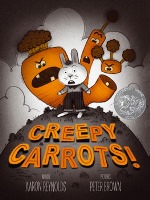 Jasper Rabbit is a carrot fanatic. Every day he eats carrots, especially the ones from Crackenhopper Field. One day, he senses the carrots stalking him, because he sees carrots everywhere – carrots in the kitchen, in the bathroom, in his bedroom, and even on his way to school. Frightened, he decides to build a wall around Crackenhopper Field, so the carrots can’t escape from the field. As Jasper is proud of what he did, carrots, peeping from the field, are ecstatic for not being eaten anymore. This book is presented as a scary movie that creates a mysterious and suspenseful atmosphere, which is accentuated by the orange and black colors. The vivid facial expressions of Jasper Rabbit will make readers understand Jasper’s fear, and they will enjoy this creepy, spooky, yet humorous book.
Jasper Rabbit is a carrot fanatic. Every day he eats carrots, especially the ones from Crackenhopper Field. One day, he senses the carrots stalking him, because he sees carrots everywhere – carrots in the kitchen, in the bathroom, in his bedroom, and even on his way to school. Frightened, he decides to build a wall around Crackenhopper Field, so the carrots can’t escape from the field. As Jasper is proud of what he did, carrots, peeping from the field, are ecstatic for not being eaten anymore. This book is presented as a scary movie that creates a mysterious and suspenseful atmosphere, which is accentuated by the orange and black colors. The vivid facial expressions of Jasper Rabbit will make readers understand Jasper’s fear, and they will enjoy this creepy, spooky, yet humorous book.
– Ying-Hsuan Lee, Washington State University Pullman
Yolen, Jane. (2013). Romping monsters, stomping monsters. Illus. by Kelly Murphy. Somerville, MA: Candlewick Press.
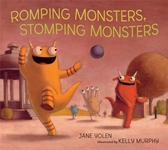 Colorful, cute, and multi-eyed monsters play in a park that resembles an almost typical city park, with monster children doing typical park activities such as: playing with balls, riding bikes, jumping rope, and playing hopscotch. The rhyming text and simple illustrations with muted bright colors will enchant the emergent reader. At first it seems this is just a magical place for monsters to run and play; however, there is a lesson about manners in the book. One little monster pokes another monster’s eye at the water fountain and laughs, but even little monsters are reprimanded for being naughty and must say “sorry.”
Colorful, cute, and multi-eyed monsters play in a park that resembles an almost typical city park, with monster children doing typical park activities such as: playing with balls, riding bikes, jumping rope, and playing hopscotch. The rhyming text and simple illustrations with muted bright colors will enchant the emergent reader. At first it seems this is just a magical place for monsters to run and play; however, there is a lesson about manners in the book. One little monster pokes another monster’s eye at the water fountain and laughs, but even little monsters are reprimanded for being naughty and must say “sorry.”
– Jane Kelley, Washington State University Pullman
GRADES 2 – 5
Celenza, Anna Harwell. (2013). Saint-Saëns’s Danse Macabre. Illus. by JoAnn E. Kitchel. Watertown: Charlesbridge.
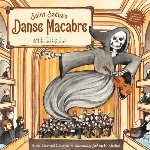 At midnight on January 24, 1875 over two thousand people gathered in the Châtelet Theater for the debut of Danse Macabre presented by the composer, Camille Saint-Saën. Once Danse Macabre was played, the theater was filled with a gloomy and spooky atmosphere. Saint-Saën’s creation of such a spooky piece of music was inspired by his visit to the underground cemetery in Paris. Saint-Saën used various instruments with a mix of waltzes and funeral tunes to compose the eerie Danse Macabre. The watercolor illustrations give this book a vintage look, and readers will notice the joyful skeletons as they jump and dance jubilantly with Saint-Saën’s music. It is recommended to read this story while listening to Danse Macabre, and a CD recording conveniently accompanies the book. Teachers could use this book for social studies and music appreciation to let students know that great music comes with a great story!
At midnight on January 24, 1875 over two thousand people gathered in the Châtelet Theater for the debut of Danse Macabre presented by the composer, Camille Saint-Saën. Once Danse Macabre was played, the theater was filled with a gloomy and spooky atmosphere. Saint-Saën’s creation of such a spooky piece of music was inspired by his visit to the underground cemetery in Paris. Saint-Saën used various instruments with a mix of waltzes and funeral tunes to compose the eerie Danse Macabre. The watercolor illustrations give this book a vintage look, and readers will notice the joyful skeletons as they jump and dance jubilantly with Saint-Saën’s music. It is recommended to read this story while listening to Danse Macabre, and a CD recording conveniently accompanies the book. Teachers could use this book for social studies and music appreciation to let students know that great music comes with a great story!
– Ying-Hsuan Lee, Washington State University Pullman
Dahl, Michael. (2013). Laff-O-Tronic monster jokes! Illus. by Daryll Colins and Michael Frederick Laughead. North Mankato, MN: Stone Arch Books.
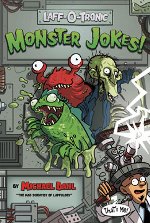 What brings monsters, zombies, vampires, and aliens together in a book? Jokes! In this funny book, the author takes children on a journey with jokes, cartoons, brain twisters, quick comics, and stand-up comedies. In one section, the book offers a way for readers to animate the pictures. For example, if readers flip one page really quickly, it will give the illusion that a vampire is popping out of a coffin. Although the majority of characters in the book are monsters, zombies, vampires, and aliens, their scary looks along with their hilarious acts make this book attractive to children. Moreover, when the book is read aloud, children will be surprised and amused by the lyric and rhythmic texts. This is a book that will make children laugh and giggle during the Halloween season!
What brings monsters, zombies, vampires, and aliens together in a book? Jokes! In this funny book, the author takes children on a journey with jokes, cartoons, brain twisters, quick comics, and stand-up comedies. In one section, the book offers a way for readers to animate the pictures. For example, if readers flip one page really quickly, it will give the illusion that a vampire is popping out of a coffin. Although the majority of characters in the book are monsters, zombies, vampires, and aliens, their scary looks along with their hilarious acts make this book attractive to children. Moreover, when the book is read aloud, children will be surprised and amused by the lyric and rhythmic texts. This is a book that will make children laugh and giggle during the Halloween season!
– Ying-Hsuan Lee, Washington State University Pullman
Green, D. L. (2013). Zeke Meeks vs the horrendous Halloween. Illus. by Josh Alves. North Mankato, MN: Picture Window Books.
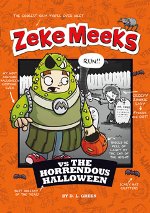 A cool costume, plus lots of candies, plus trick-or-treating with best friends equals a fun and fabulous Halloween; however, Halloween did not start that way for Zeke. First, he has to dress up as a pirate to avoid wearing an uncool beach ball costume and Cursed Mongrel costume. Then, he feels horrible for getting pencils instead of candies as he trick-or-treats with his younger sister, Mia. To turn the lousy Halloween around, Zeke persuades his older sister, Alexa, to take him to Hector’s neighborhood and enjoy trick-or-treating with his best friend. Many children can relate to Zeke’s desire for a wonderful Halloween. Sometimes it doesn’t matter whether you have the coolest costume in the world; what does matter is having fun with your best friends on Halloween night! A vocabulary list included in the book can satisfy children who want to use big words like Zeke!
A cool costume, plus lots of candies, plus trick-or-treating with best friends equals a fun and fabulous Halloween; however, Halloween did not start that way for Zeke. First, he has to dress up as a pirate to avoid wearing an uncool beach ball costume and Cursed Mongrel costume. Then, he feels horrible for getting pencils instead of candies as he trick-or-treats with his younger sister, Mia. To turn the lousy Halloween around, Zeke persuades his older sister, Alexa, to take him to Hector’s neighborhood and enjoy trick-or-treating with his best friend. Many children can relate to Zeke’s desire for a wonderful Halloween. Sometimes it doesn’t matter whether you have the coolest costume in the world; what does matter is having fun with your best friends on Halloween night! A vocabulary list included in the book can satisfy children who want to use big words like Zeke!
– Ying-Hsuan Lee, Washington State University Pullman
Krohn, Katherine. (2014). The unsolved mystery of haunted houses. North Mankato, MN: Capstone Press.
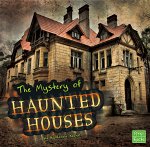 This nonfiction book is a gentle introduction to the phenomenon of haunted homes. Squeaky doors, strange noises, seeing something…are these real or imaginary? The logical explanations in the book include true or false statements with explanations. The book also introduces ghost hunters, the equipment they use, and paranormal phenomena. This book has many vocabulary words and website links and a great spooky read for young readers!
This nonfiction book is a gentle introduction to the phenomenon of haunted homes. Squeaky doors, strange noises, seeing something…are these real or imaginary? The logical explanations in the book include true or false statements with explanations. The book also introduces ghost hunters, the equipment they use, and paranormal phenomena. This book has many vocabulary words and website links and a great spooky read for young readers!
– Rani Iyer, Washington State University Pullman
GRADES 6 – 7
Brimingham, Maria. (2013). Weird zone: Sports – The strangest, funniest, and most daringest events from the world of athletics and beyond! Ills. by Jamie Bennett. Toronto, Ontario: Owlkids Books Inc.
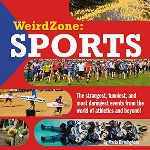 This Halloween kids can indulge in real dare games—ride a round bottom pan, play underwater golf, or participate in the underwater bicycle race! Races from all over the world are described in this book. The pages are filled with quirky, weird sports and games and with facts, humor, and “gazillion” records. Not all sports are exotic, however. Consider the entry on Stone Skipping which records that Russell Byars skipped a stone across a river in Pennsylvania an astonishing 51 times! Some sports are dangerous, such as the North Pole Marathon and some are extreme, such as Downhill Ice Cross. Others are modifications of existing games, such as hangboarding (that combines snowboarding and hang gliding). This amazing book entertains, informs, and boosts the imagination of kids. It can be used across several content areas. So, which games will the kids dare to play?
This Halloween kids can indulge in real dare games—ride a round bottom pan, play underwater golf, or participate in the underwater bicycle race! Races from all over the world are described in this book. The pages are filled with quirky, weird sports and games and with facts, humor, and “gazillion” records. Not all sports are exotic, however. Consider the entry on Stone Skipping which records that Russell Byars skipped a stone across a river in Pennsylvania an astonishing 51 times! Some sports are dangerous, such as the North Pole Marathon and some are extreme, such as Downhill Ice Cross. Others are modifications of existing games, such as hangboarding (that combines snowboarding and hang gliding). This amazing book entertains, informs, and boosts the imagination of kids. It can be used across several content areas. So, which games will the kids dare to play?
– Rani Iyer, Washington State University Pullman
Harbo, Christopher. (2014). Frankenstein's monster and scientific methods. Illustrated by Carlos Aon. Minnesota, MN: Capstone Press.
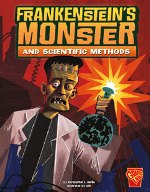 The scientific method involves asking a question, gathering information, making a prediction, designing an experiment to test the question, collecting data, analyzing data, drawing conclusions, and communicating results and that is exactly what Frankenstein and Igor do in this book. Graphic pictures enliven the narrative with humor sprinkled in the context. Each chapter follows the typical steps in the scientific method as well as warning the reader that the scientific method does not always work. Sidebars provide useful information regarding the use of graphs and type of graphs, the way to organize a well-written lab report, and how to create presentations. The busy teacher will appreciate that the book is aligned to the Common Core Science Standards. Overall, students interested in knowing more about science or the scientific method will find this book interesting and it is a good addition to a science classroom or laboratory collection.
The scientific method involves asking a question, gathering information, making a prediction, designing an experiment to test the question, collecting data, analyzing data, drawing conclusions, and communicating results and that is exactly what Frankenstein and Igor do in this book. Graphic pictures enliven the narrative with humor sprinkled in the context. Each chapter follows the typical steps in the scientific method as well as warning the reader that the scientific method does not always work. Sidebars provide useful information regarding the use of graphs and type of graphs, the way to organize a well-written lab report, and how to create presentations. The busy teacher will appreciate that the book is aligned to the Common Core Science Standards. Overall, students interested in knowing more about science or the scientific method will find this book interesting and it is a good addition to a science classroom or laboratory collection.
– Rani Iyer, Washington State University Pullman
Jinks, Catherine. (2013). How to catch a Bogle. Illustrated by Sarah Watts. New York, New York: Harcourt Children’s Books.
 Set in Victorian England, Birdie, like other orphans, is inducted into unsavory jobs for survival. Birdie’s life is better since she has become the apprentice for Alfred the Bogler, the man who traps the monsters. Alfred sets up Birdie as live bait and asks her to sing. When the Bogle comes to grab her, Birdie races away and Alfred spears the Bogle. The team has been successful for a while, when Miss Eames with interest in spirits and Bogles joins them as a bystander to watch them on field. Miss Eames faints! She makes an offer to Birdie—in exchange for stopping the dangerous act, she would provide Birdie with housing, voice lessons, and to learn how to read and write. This book is a part of trilogy and has excellent use of the Victorian language. The prolific author’s website provides more reads for those interested in spooky reads .
Set in Victorian England, Birdie, like other orphans, is inducted into unsavory jobs for survival. Birdie’s life is better since she has become the apprentice for Alfred the Bogler, the man who traps the monsters. Alfred sets up Birdie as live bait and asks her to sing. When the Bogle comes to grab her, Birdie races away and Alfred spears the Bogle. The team has been successful for a while, when Miss Eames with interest in spirits and Bogles joins them as a bystander to watch them on field. Miss Eames faints! She makes an offer to Birdie—in exchange for stopping the dangerous act, she would provide Birdie with housing, voice lessons, and to learn how to read and write. This book is a part of trilogy and has excellent use of the Victorian language. The prolific author’s website provides more reads for those interested in spooky reads .
–Rani Iyer, Washington State University Pullman
Klise, Kate. (2013). 43 Old Cemetery Road: Hollywood dead ahead. Illustrated by M. Sarah Klise. New York, NY: Harcourt Children's Books.
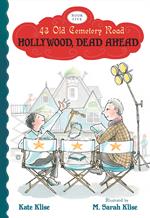 43 Old Cemetery Road is the story of Olive C. Spence (owner of the house), Mr. Ignatius Grumply (an author with a huge writer's block) and Seymour Hope (10-year old boy living alone). In their first book, Mr. Grumply is faced with a deadline by his publisher and does not have a word on the page, Seymour needs a home, and Olive needs company. Four books later, Olive and Ignatius have adopted Seymour. However, they are an odd family, for, Olive is a ghost! Their story is now world famous and has caught the attention of Hollywood director Moe Block Busters who wants to make a movie based on the book. Thus, the family temporarily moves to Hollywood and nothing is the same. The book will engage readers and provide opportunities to study different types of writing. This is a great everyday book and it is not just the season of spook.
43 Old Cemetery Road is the story of Olive C. Spence (owner of the house), Mr. Ignatius Grumply (an author with a huge writer's block) and Seymour Hope (10-year old boy living alone). In their first book, Mr. Grumply is faced with a deadline by his publisher and does not have a word on the page, Seymour needs a home, and Olive needs company. Four books later, Olive and Ignatius have adopted Seymour. However, they are an odd family, for, Olive is a ghost! Their story is now world famous and has caught the attention of Hollywood director Moe Block Busters who wants to make a movie based on the book. Thus, the family temporarily moves to Hollywood and nothing is the same. The book will engage readers and provide opportunities to study different types of writing. This is a great everyday book and it is not just the season of spook.
– Rani Iyer, Washington State University Pullman
Rhatigan, Joe. (2013). Ouch! The weird & wild ways your body deals with agonizing aches, ferocious fevers, lousy lumps, crummy colds, bothersome bites, breaks, bruises & burns & makes them feel better. Ills. by Anthony Owsley. Waterton, MA: Charlesbridge Publishing.
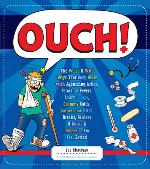 Does the sight of blood, even fake, make some students quiver? Well, then here is a book for you! This Halloween the students can use the book to learn about the human body. The book is divided into two parts. The first part concerns the basic body function that introduces the readers to the human body in a very friendly and conversational tone. The pain scale is introduced with a series of smiley faces and the captions introduce the degree of pain, such as “Well, this is slightly annoying” and “Ow, that really, really, hurts.” The second part of the book introduces the readers to the injuries, infections, and other things that can go wrong including fevers, chills, and aches. For all such conditions, the smiley face and the pain level is introduced. This engaging book will enrich biology lessons on pain levels and the human body.
Does the sight of blood, even fake, make some students quiver? Well, then here is a book for you! This Halloween the students can use the book to learn about the human body. The book is divided into two parts. The first part concerns the basic body function that introduces the readers to the human body in a very friendly and conversational tone. The pain scale is introduced with a series of smiley faces and the captions introduce the degree of pain, such as “Well, this is slightly annoying” and “Ow, that really, really, hurts.” The second part of the book introduces the readers to the injuries, infections, and other things that can go wrong including fevers, chills, and aches. For all such conditions, the smiley face and the pain level is introduced. This engaging book will enrich biology lessons on pain levels and the human body.
– Rani Iyer, Washington State University Pullman
GRADES 8 – 12
Rodman, Sean. (2013). Night terrors. Custer: Orca Book Publisher.
 Dylan has been haunted by the witness of his brother’s drowning accident, which gives him nightmares all the time. To escape from such night terrors, Dylan decides to work in a five-star resort, Ravenslake Lodge, during the summer. As the resort closes for the winter, Dylan and his colleagues stay longer to help. However, what troubles Dylan is that he sees visions of his brother at times! Dylan wonders: Is he dreaming? Is that a ghost or a real person? Is this all caused by his illusion or does he miss his brother too much? This is a short chapter book that is easy to read and grabs readers’ attention from the very beginning. Readers will enjoy the mysterious and suspicious atmosphere within the story!
Dylan has been haunted by the witness of his brother’s drowning accident, which gives him nightmares all the time. To escape from such night terrors, Dylan decides to work in a five-star resort, Ravenslake Lodge, during the summer. As the resort closes for the winter, Dylan and his colleagues stay longer to help. However, what troubles Dylan is that he sees visions of his brother at times! Dylan wonders: Is he dreaming? Is that a ghost or a real person? Is this all caused by his illusion or does he miss his brother too much? This is a short chapter book that is easy to read and grabs readers’ attention from the very beginning. Readers will enjoy the mysterious and suspicious atmosphere within the story!
– Ying-Hsuan Lee, Washington State University Pullman
Tucholke, April Genevieve. (2013). Between the devil and the deep blue sea. New York, NY: Dial Books.
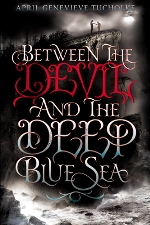 Violet White and her twin brother live in the luxurious mansion, Citizen, in a small town on the East Coast. Born rich, but currently poor, they have run out of money. Her parents, who are famous artists, are in Europe. Violet advertises their guesthouse as a rental. River, an attractive youth, answers the call. From the beginning Violet bonds deeply with him. Soon, Violet realizes he has a ‘spark’ that makes him both attractive and wicked. As summer unfolds, Violet learns more family secrets than she cares for. She also begins to hate River for the extraordinary power he carries and the manner in which he easily hurts people. River’s brother Neely and his half-brother Brodie appear on the scene, changing Violet’s life forever. The dramatic ending leaves open room for a sequel. The book has elements of romance, suspense, a perfect read for the Halloween week.
Violet White and her twin brother live in the luxurious mansion, Citizen, in a small town on the East Coast. Born rich, but currently poor, they have run out of money. Her parents, who are famous artists, are in Europe. Violet advertises their guesthouse as a rental. River, an attractive youth, answers the call. From the beginning Violet bonds deeply with him. Soon, Violet realizes he has a ‘spark’ that makes him both attractive and wicked. As summer unfolds, Violet learns more family secrets than she cares for. She also begins to hate River for the extraordinary power he carries and the manner in which he easily hurts people. River’s brother Neely and his half-brother Brodie appear on the scene, changing Violet’s life forever. The dramatic ending leaves open room for a sequel. The book has elements of romance, suspense, a perfect read for the Halloween week.
– Rani Iyer, Washington State University Pullman
These reviews are submitted by members of the International Reading Association's Children's Literature and Reading Special Interest Group (CL/R SIG) and are published weekly on Reading Today Online. The International Reading Association partners with the National Council of Teachers of English and Verizon Thinkfinity to produce ReadWriteThink.org, a website devoted to providing literacy instruction and interactive resources for grades K–12.